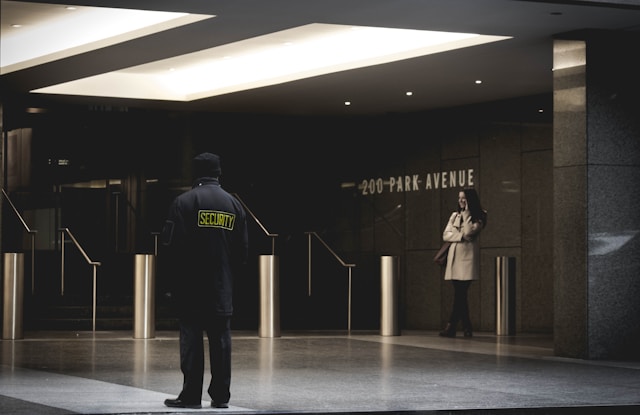Popular Technology Trends for Event Security

Event security has undergone significant changes over the years, primarily due to advancements in technology that enhance attendee safety. As safety concerns escalate, event organizers need to adopt new tools and methods. From smart cameras to better crowd management, event security is rapidly evolving. Being aware of these trends enables organizers and guests to have a more enjoyable experience.
Let’s examine ways to enhance event security.
Smart Surveillance
Smart surveillance systems have become a key part of event security. These systems utilize AI to monitor crowds and quickly identify potential security threats. With high-definition cameras placed around the venue, security staff receive instant alerts about unusual behaviour or crowded areas.
Smart surveillance can analyze large amounts of data, making it essential for today’s event security. By using facial recognition technology, security teams can quickly identify people on watch lists. This makes it easier to keep everyone safe without interrupting the event. In short, intelligent surveillance not only enhances safety but also enables security staff to perform their jobs more effectively.
Crowd Management Solutions
Managing crowds effectively is crucial for maintaining security at large events. New technology has created crowd management tools that simplify this task. For example, mobile apps for crowd monitoring enable organizers to track audience density in various areas of the venue.
These apps provide real-time information that helps security teams make smart decisions about crowd control. They can reroute attendees to less crowded areas or add security measures when necessary. Technology helps event organizers create a safe environment efficiently.
Additionally, digital ticketing and RFID wristbands facilitate smoother entry and exit. This reduces bottlenecks and helps maintain a steady flow of attendees. Event-goers enjoy a better experience while security ensures everything runs smoothly.
Walk-Through Metal Detectors
A walk through metal detector is now common in event security. They help create a safe environment while allowing quick entry. These detectors screen attendees for metallic objects that could pose a security risk, acting as a reliable first line of defence.
These detectors are fast. Attendees can walk through in seconds, which reduces wait times and keeps a positive atmosphere from the start. Security teams can set up these detectors in various ways to effectively handle large crowds.
Using walk-through metal detectors gives peace of mind to both security staff and guests. Knowing that there are systems in place to identify potential threats helps everyone feel safer and more trusting.
Drone Technology
Drones are changing event security by offering unique surveillance options that traditional methods cannot match. They provide bird’s-eye views of large venues, helping security teams understand crowd behaviour and manage logistics. Drones can quickly cover large areas and monitor high-traffic zones that need extra attention.
Drones with thermal imaging can spot problems, like sudden large gatherings or unusual behaviour. This allows security to act before issues escalate.
Using drones at events improves security and adds an interesting visual element. Drones communicate information quickly to ground teams, enhancing coordination among security staff for a safer event.
Access Control Systems
Access control systems are vital for event security. They manage who enters specific areas and keep detailed attendance records. With biometric scanners and mobile access, security can effectively control entry while prioritizing safety.
Biometric identification, such as fingerprint or facial recognition, enhances security and streamlines the check-in process. Attendees can trust that only authorized individuals have access to restricted areas, such as VIP sections or behind-the-scenes zones.
Digital check-in reduces counterfeit tickets and entry fraud. When paired with RFID technology, they can create personalized experiences for attendees based on their access levels. Access control systems enhance security while improving the overall event experience.
Event Safety Apps
Smartphones are now an integral part of our daily lives, and event safety apps have become crucial for maintaining event security. These apps let organizers send important information to attendees in real-time. People can receive alerts about emergencies, schedule changes, or key announcements directly on their phones.
Many of these apps also feature panic buttons that allow attendees to notify security if they feel unsafe discreetly. This type of communication fosters a sense of community and helps everyone stay informed about what’s happening around them. When guests can report their concerns directly, organizers can quickly address issues and maintain a safe environment.
Incident Response Planning
A strong incident response plan is essential for ensuring safety at events. This plan should outline clear steps for responding to emergencies, such as medical issues, natural disasters, or security threats. Regular drills and training for security staff and volunteers help everyone learn the procedures and respond properly when problems arise.
Clear communication is vital during an incident. Event organizers must create direct lines of communication between security teams, event staff, and local authorities. Using tools like mass notification systems allows for the quick sharing of important information with everyone involved. A well-trained team with a clear action plan can reduce risks and ensure the safety of all attendees.
